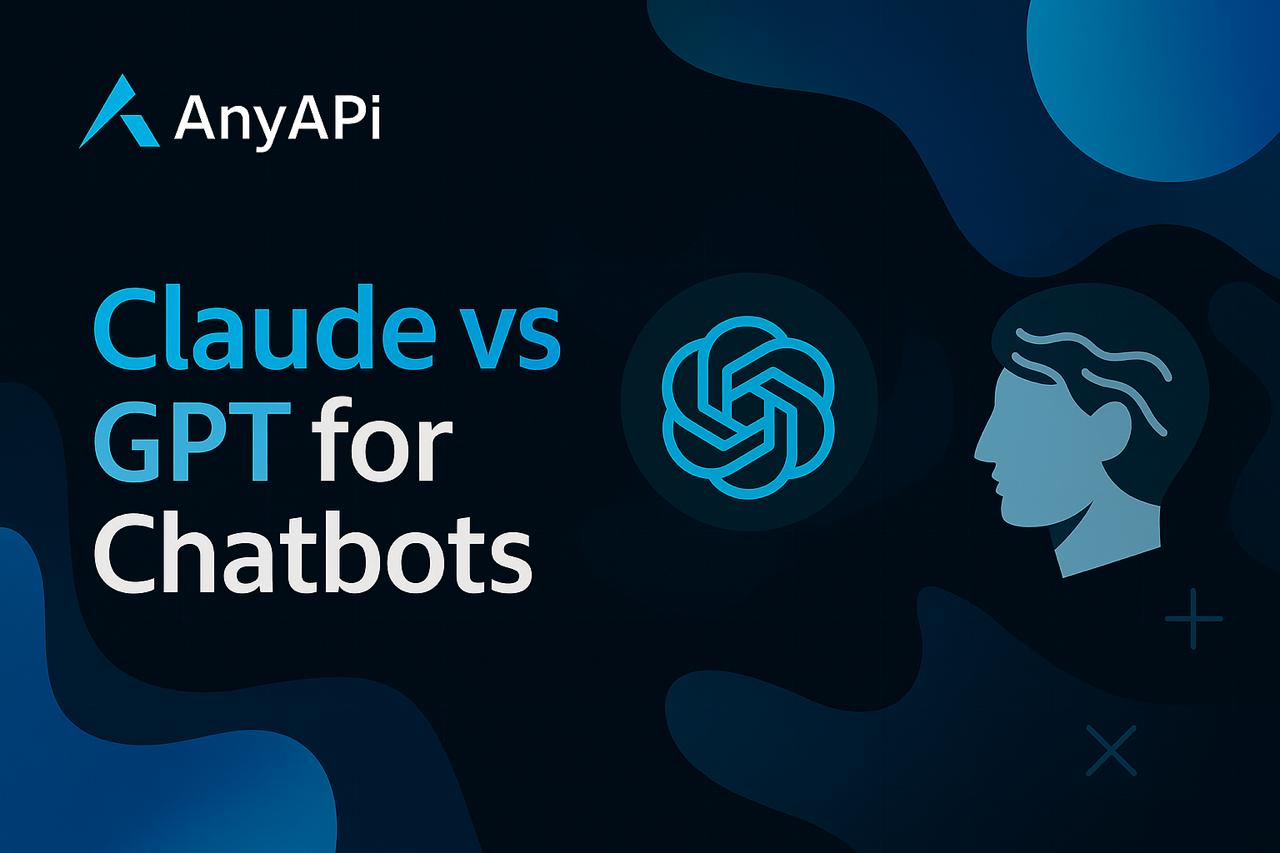Claude vs GPT for Chatbots: Choosing the Right Model

You’re building a chatbot for your SaaS app. Maybe it’s a support assistant, maybe it’s for onboarding. You want it to feel fast, smart, and actually useful. So you pick a leading model, wire up your prompts, and ship. But users complain. It hallucinates. It talks too much. Or not enough. Or it’s just… bland.
Sound familiar?
The model you choose at the core of your chatbot matters more than you think. Let's break down the two top contenders: Claude (Anthropic) and GPT (OpenAI).
Claude vs GPT: What’s the Difference?
Both Claude and GPT are general-purpose LLMs. But under the hood, they behave differently.
- Claude (e.g., Claude 3 Opus): Known for its constitutional AI approach. Claude is tuned to be helpful, harmless, and honest. It leans toward safer, more cautious outputs. Great for factual Q&A, knowledge retrieval, and brand-safe messaging.
- GPT (e.g., GPT-4-turbo): Trained with reinforcement learning from human feedback (RLHF). More assertive, creative, and versatile in tone. GPT often feels more conversational and human-like.
If Claude is the calm librarian, GPT is the charismatic talk show host.
Chatbot Use Cases: Which Model Wins Where
Let’s map it to real-world product decisions.
1. Customer Support Chatbots
- Claude shines. It's less likely to go off-script or hallucinate answers, especially when grounded with RAG (retrieval-augmented generation).
- GPT can work well with guardrails and system prompts, but requires tighter control.
2. Onboarding or Feature Tours
- GPT excels here. It’s engaging and expressive, ideal for walking users through steps in a friendly way.
- Claude is serviceable, but can feel more neutral or robotic.
3. Internal Tools or Knowledge Bots
- Claude wins for accuracy and staying on-topic.
- GPT adds value if creativity or synthesis is needed (e.g., summarizing long docs).
4. AI Companions or Productivity Assistants
- GPT leads with its fluency and sense of voice.
- Claude lags slightly in emotional nuance but is improving.
Performance & Cost Considerations
Pricing and speed can vary by API provider, but some general notes:
- Claude 3 Opus tends to be slightly slower and more expensive than GPT-4-turbo, depending on context length and usage.
- GPT-3.5-turbo is a cheaper option that’s fast and solid for casual use cases.
- Claude 3 Haiku is Anthropic's lighter model and works well for high-volume interactions with low latency.
Prompt Engineering Differences
Prompt design matters. And Claude and GPT respond to cues differently:
- Claude prefers clarity. Use full sentences and structured instructions.
- GPT thrives on context. You can embed subtext or indirect goals, and it often picks them up.
This has UX impact: GPT might handle vague user inputs more naturally. Claude might give cleaner, more consistent outputs when well-prompted.
A SaaS Team’s Dilemma
Say you’re a SaaS founder shipping a self-service analytics platform. Your team wants to add an AI-powered support agent that answers questions about your product.
- You try GPT first. It sounds great—until it gives slightly wrong info.
- You swap in Claude. Now answers are safer, but users ask follow-up questions because the tone is less confident.
- Your solution: Use Claude for factual Q&A, and GPT for onboarding and upsell moments. Both models work behind the same interface.
Let Use Case Drive Model Choice
There’s no one "best" LLM. Claude and GPT each bring strengths to the table. For chatbot developers, the smart play is to experiment, A/B test, and match model behavior to user expectations.
The best part? With AnyAPI, you can test both Claude and GPT in production from a single API, with unified tooling and observability. So you’re never locked in, and always shipping with the best.
FAQ
Can I switch between Claude and GPT without changing my codebase?
A: Yes, if you use a platform like AnyAPI that abstracts LLM providers, switching models is easy.
Which model is more private or secure?
A: Both Anthropic and OpenAI offer enterprise-grade security, though Claude has a reputation for being more conservative with responses.
Should I fine-tune or use out-of-the-box models?
A: For most chatbot use cases, smart prompting with a unified API is faster and more cost-effective than fine-tuning.
What about multilingual support?
A: GPT supports more languages with greater fluency today, though Claude is catching up quickly.
How do I evaluate chatbot performance across models?
A: Use metrics like hallucination rate, response time, user satisfaction, and fallback triggers. A/B test with real users whenever possible.
Need to evaluate Claude and GPT side-by-side? Try it with AnyAPI – no extra config, no vendor lock-in.





